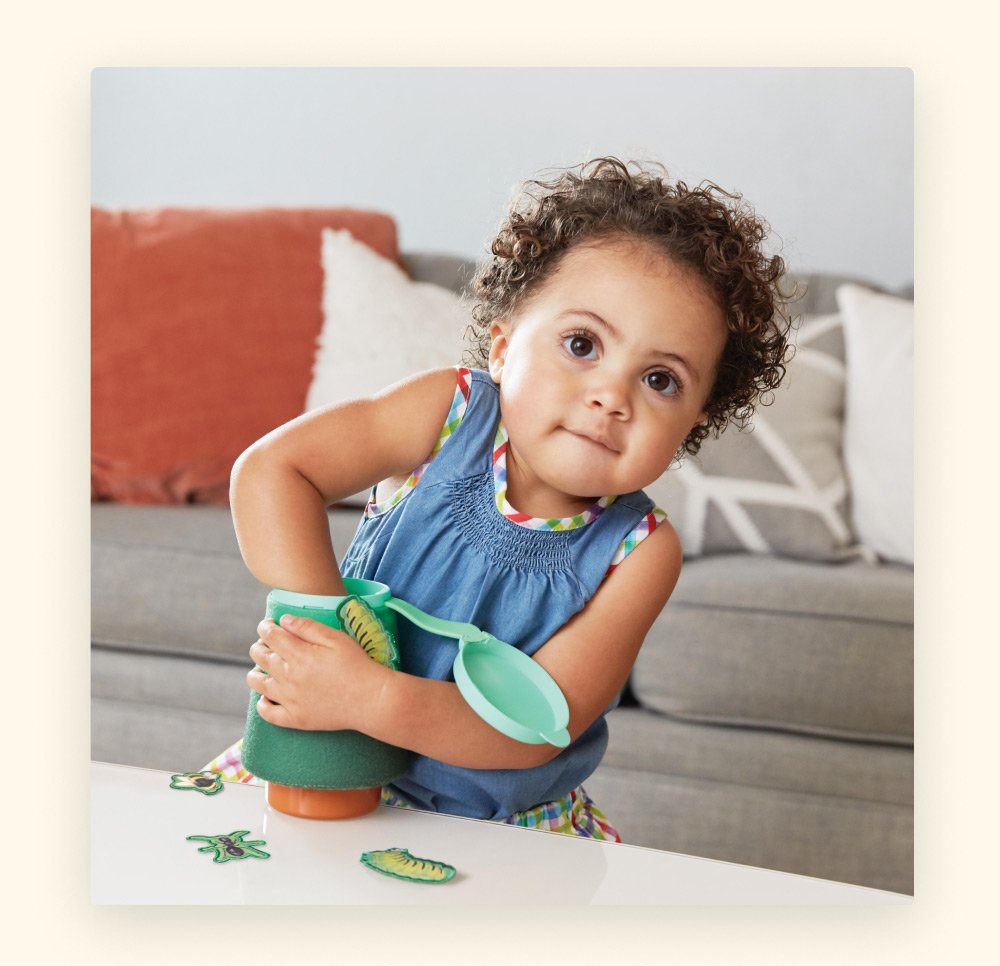Building a strong pencil grip: 3 fun art tools and activities for toddlers

Holding a pencil feels like something that just happens, but it is yet another one of those skills that develops through steps and stages. As they get closer to 2, your toddler may be moving from a fisted grip toward one that uses the strength of their fingers and thumb to control a crayon or other writing utensil.
This “digital-pronate” grasp strengthens the muscles of their thumb and fingers, eventually moving them toward the classic pencil grip—the tripod grasp. You can encourage this pre-writing grip by offering your toddler the right tools and some simple art and sensory experiences to go with them.
1. Squishy sponges
The squishiness of a small sponge encourages your toddler to use a firm grip, pinching with their fingers and thumb.
Try this: Make soap foam before bath time by combining 1/2 cup bath gel or bubble bath with 1/4 cup water and mixing with a hand mixer until it gets thick and forms peaks. Cut a sponge into 1 to 2 inch squares (or other shapes). Show your toddler how they can smear soap foam on the side of the tub, and then “draw” on their soapy canvas with their sponges.
2. Bulb-topped brushes
Paintbrushes and drawing implements with round, egg shaped, or bulb-style tops allows your toddler to grip with their whole hand, while pointing their fingers down. This “ball grip” strengthens the webbing between their thumb and pointer while still letting their palm do some of the work.
Try this: Offer your toddler a container of water and a bulb-topped paintbrush so they can paint on the sidewalk and watch their magic art disappear as it dries.
3. Crayon bits
Broken pieces of a crayon, crayon blocks, and Crayon Rocks are too small to grip with a closed fist. Your toddler will figure out how to use their fingers and thumb to scribble with these unconventional crayon shapes.
Try this: A big piece of paper taped to the floor or a wall with a few of these small crayons gives your toddler a chance to build finger, elbow, and shoulder strength as they move their whole arm to make their mural. To extend the activity, use a bulb-topped brush to paint over the crayon drawings with watercolors. Your toddler may be interested in how the crayon marks repel the watercolor paint.
Note: Small items such as broken crayons and pieces of sponge can be choking hazards. Please be sure to supervise your toddler at all times when using these materials and put them safely away when play is done.
Learn more about the research
Burton, A. W., & Dancisak, M. J. (2000). Grip form and graphomotor control in preschool children. The American Journal of Occupational Therapy, 54(1), 9-17.
Schneck, C. M., & Henderson, A. (1990). Descriptive analysis of the developmental progression of grip position for pencil and crayon control in nondysfunctional children. The American Journal of Occupational Therapy, 44(10), 893-900.
Keep reading

19 - 21 Months
Introducing the Wheel Around Town Bus—the newest addition to The Realist Play Kit
Built for the way toddlers play, the Wheel Around Town Bus in The Realist Play Kit taps into your toddler's emerging skills.

19 - 21 Months
22 - 24 Months
Toddler potty training: setting the stage
Learn nine ways to help your toddler get comfortable with the toilet and noticing their body's signals.

19 - 21 Months
22 - 24 Months
Choosing the right potty for your toddler: potty chair vs. potty seat
Your child can potty train using a floor potty or a seat that fits on a regular toilet. Learn the pros and cons of each style.

